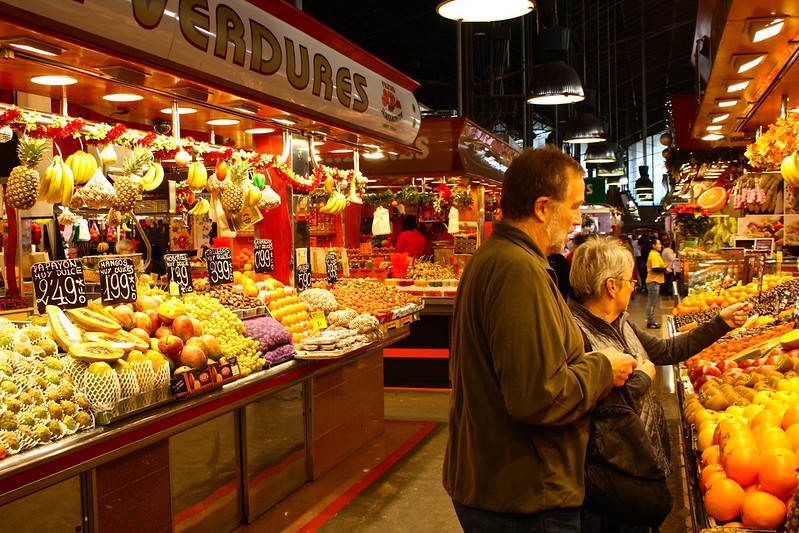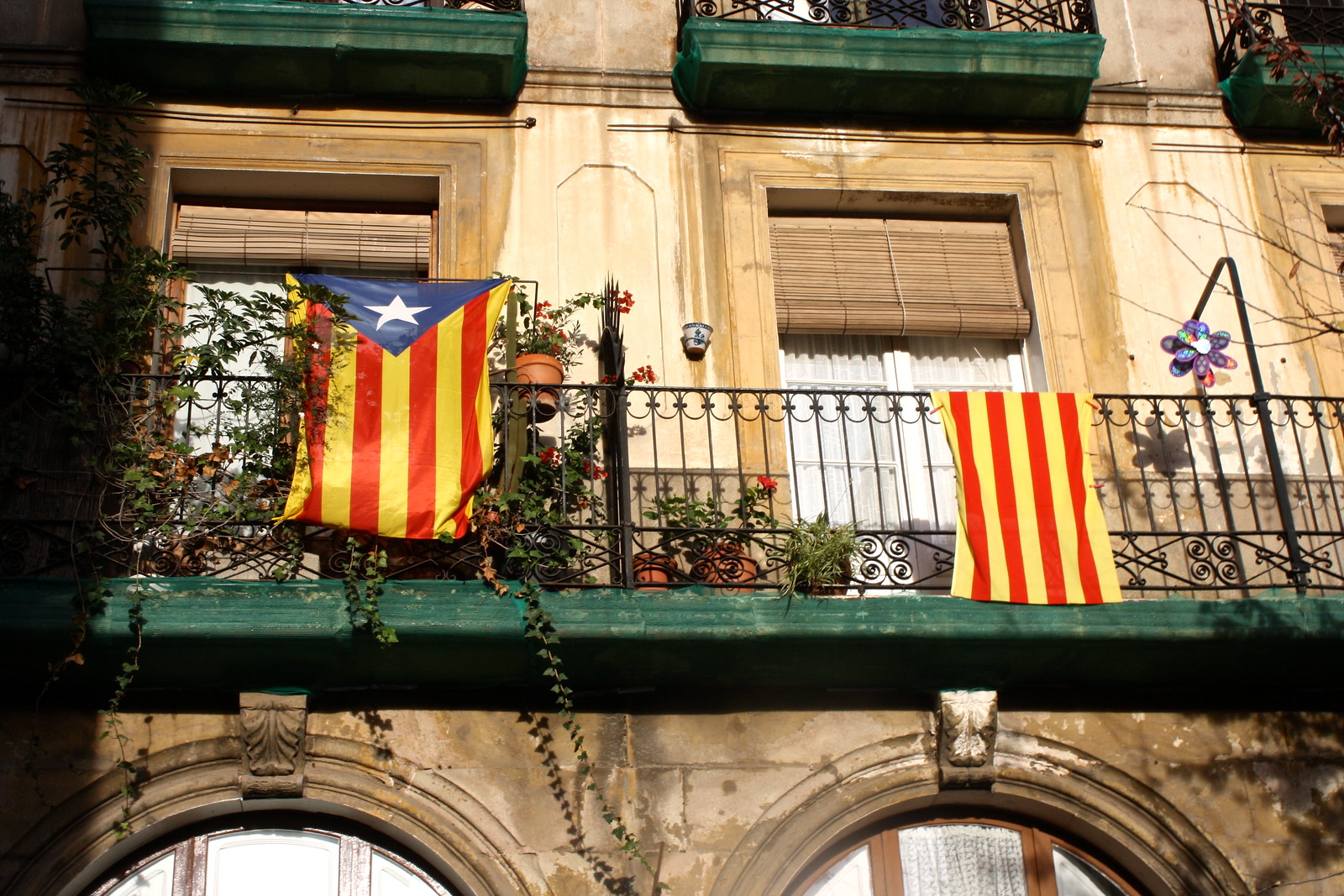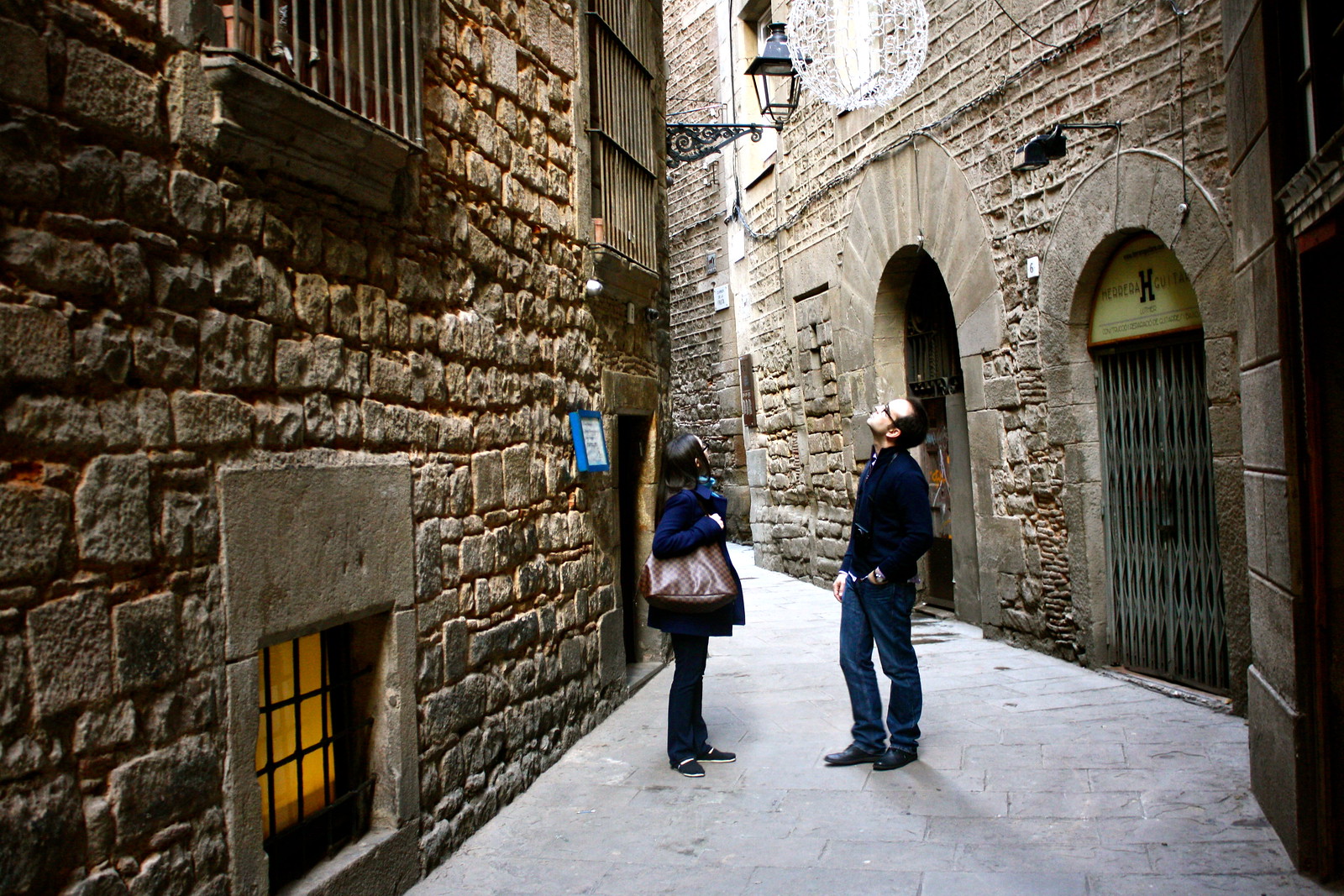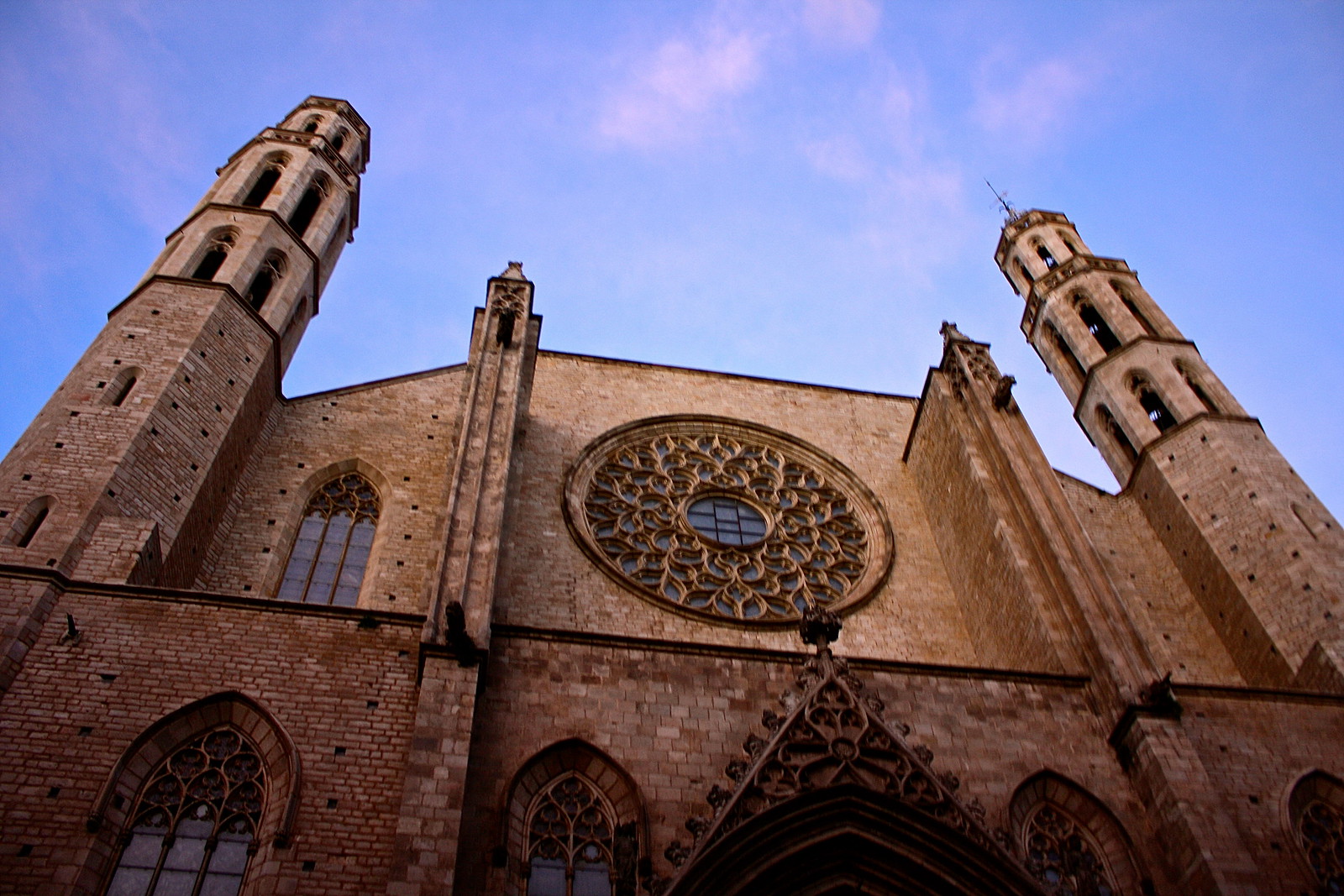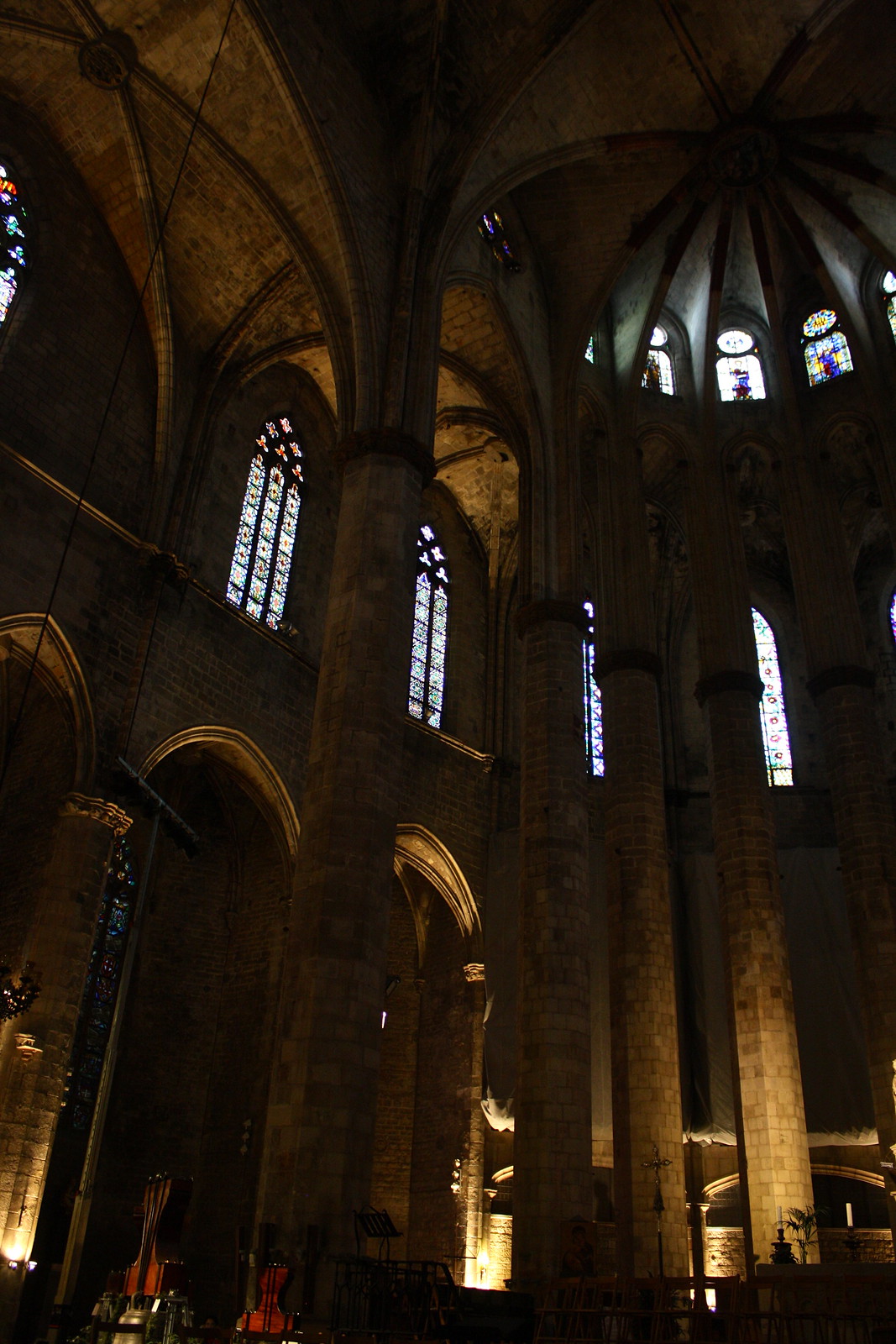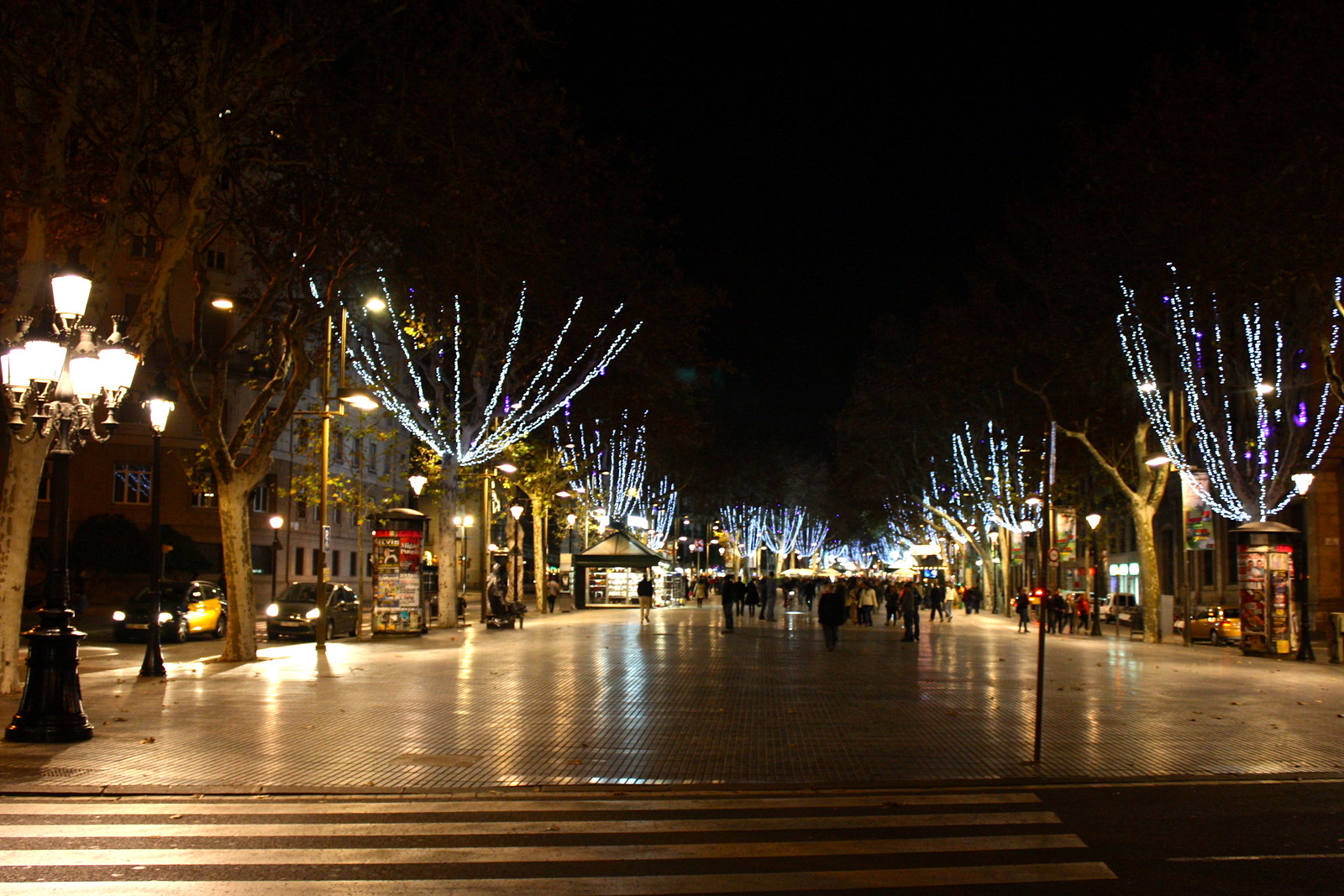For the two weeks’ Christmas vacation I got from working as a language assistant this year, I decided to take a trip to France, a trip to France by train. Living so far south on the Iberian peninsula meant, however, that I would have to spread these train trips over a few days just to get from
Úbeda to Paris with some sanity (and sleep).
So I decided to take the
trenhotel (night train) from home, arrive in Barcelona in the morning, and take another night train to Paris that evening—giving me a ten-hour layover in Barcelona between night trains. Since there is just so much to see and do in that city, I planned to limit myself to the
Barri Gòtic (old town) for the day, following travel blogger Nomadic Matt’s
advice. After this brief appetizer of sightseeing, I would sleep on the train, wake up in Paris, and hit the ground running.
That was the plan, at least.
La Boqueria market
Since I was hangry, I went here for breakfast. First things first!
I was so overwhelmed by just how extensive the variety of produce and meat was there; I even saw whole chicken and rabbit hanging in one food stand—whole, as in with feathers or fur! What freaked me out (in a good way), though, was seeing dragonfruit at one of the fruit sellers. I picked a cellophane’d half up for breakfast, and while it wasn’t as good as the dragonfruit juice my host home mom made when I studied abroad in Costa Rica, it made me really happy just to enjoy this hard-to-find, outrageously-magenta fruit.
Cathedral
Barcelona’s cathedral (not to be confused with Antoni Gaudí’s nearby Sagrada Família basilica) is your basic, run-of-the-mill Gothic church, nothing to get too excited about. The elevator to the roof, however, gave me some great views of the whole city. Since the cathedral sits in the middle of the old city, you can see all of Barcelona as it has grown out from the walled medieval town. I was able to see the
Sagrada Família, the hilltop park of Montjuïc, and even the Mediterranean Sea from the roof.
Museu d’Història de Barcelona
Right nearby the cathedral is the Barcelona History Museum, housed in the palaces that were once home to the counts of Barcelona and kings of Aragón. This is a very, very well-done museum, spanning the entire history of the city from prehistoric to modern times. The more than 60 English audioguide tracks took me throughout the museum, where I learned how the ancient Roman settlement corresponds with the current old town (whoa!), wandered over the ruins of Roman apartments and baths beneath layers of city strata, and realized that the coastline of the contemporary city is much different than it was even in medieval times.
Sinagoga Major
After interesting synagogue visits in Córdoba and here in Úbeda, the Old Synagogue of Barcelona was a little underwhelming—even though it is one of the oldest surviving in Europe and has been restored for occasional religious use. The curator gave a short little presentation about its history, architecture, and rediscovery before letting us explore the tiny space for a bit.
Museu Picasso
I’ll be honest—Pablo Picasso is one of my all-time favorite artists, so I came into this museum dedicated solely to his works with high expectations…which were promptly unmet. The museum’s collection consisted mainly of the artist’s early and Blue Period works (I prefer his cubist paintings), but near the end of the galleries was a real treat: Picasso’s
suite of 58 paintings that analyzed and reworked Diego Velázquez’s famous piece
Las Meninas. The museum was formed with donations from Picasso’s secretary, Jaume Sabartés, and later from Picasso himself, who lived in Barcelona for some time.
Església de Santa Maria del Mar
Just down the street from the Picasso Museum is the Church of Santa Maria del Mar, a beautiful Gothic church that I enjoyed much more than the cathedral. I don’t know what came over me, but after doing the usual tourist visit of the church, I ended up simply lingering in the pews for half an hour. Perhaps it was the soft violin recording playing in the background, the warm, dim lighting that filled the wide, expansive naves, or its sparse, simple interior…or perhaps it was just
siesta time. I really enjoyed just taking it all in and chilling from the go-go-go sightseeing earlier in the day.
Missing the night train to Paris
The
trenhotel to Paris was due to leave the northern “França” station at 7:55pm, but first I had to return to the southern Sants station, where I had left my luggage at the lockers so I wouldn’t have to lug around a big backpack across Barcelona all day. I gave myself an hour to pick up my bag and move across town, but I guess it just wasn’t enough.
After getting my bag, I waited for the
Rodalies (commuter train) to arrive: a direct, eight-minute ride to the França station. The TV screen was showing “7:30pm” as the next departure, but it also mentioned that there was an “incident” on the R2 line, which would “delay” its trains. I was waiting on the R2 Sud line, so I didn’t think much of it until the screen abruptly changed 7:30 to 7:50! Panicking, I ran upstairs and, after consulting with the thankfully-English-speaking concierge, continued running like a madman through the Sants station and caught a taxi to França.
It was too late, though. We hit probably 80% of the red lights on the way there (of course…), and when we finally arrived and I dashed into the train station at 8:00pm, there was no night train in sight. I was super pissed, not only at myself for waiting for a commuter train that was never going to come and not leaving myself more time, but also at Spain for not living up to “Spanish time”—I mean, five minutes, really?
Moving from the “anger” to the “acceptance” stage of grief, next I tried to change my ticket. Customer service would only give me a 50% refund, but I did, at least, get a ticket on the high-speed train leaving in the morning. My trip would not be thrown into shambles, as I feared. God bless that lady who was working the ticket stand that night!
If you’ve visited the Barri Gòtic (old town) of Barcelona before, what did you think of it? Have any stories about missing trains (overnight or otherwise)? Discuss in the comments below!
